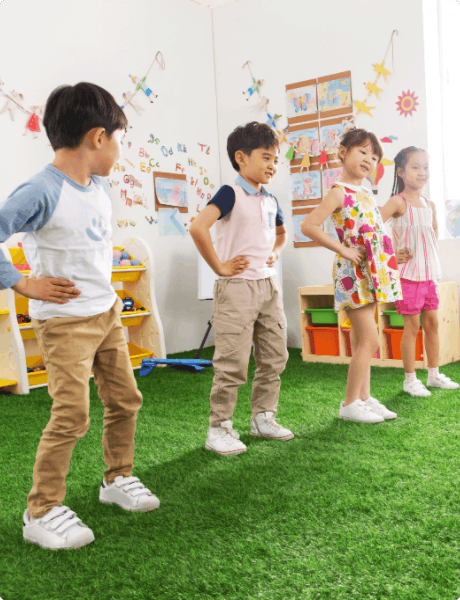
- Afrikaans
- Arabic
- Belarusian
- Bengali
- Czech
- Danish
- Dutch
- English
- Esperanto
- Estonian
- Finnish
- French
- German
- Greek
- Hindi
- Hungarian
- Icelandic
- Indonesian
- irish
- Italian
- Japanese
- kazakh
- Rwandese
- Korean
- Kyrgyz
- Lao
- Latin
- Latvian
- Malay
- Mongolian
- Myanmar
- Norwegian
- Persian
- Polish
- Portuguese
- Romanian
- Russian
- Serbian
- Spanish
- Swedish
- Tagalog
- Tajik
- Thai
- Turkish
- Turkmen
- Ukrainian
- Urdu
- Uighur
- Uzbek
- Vietnamese
Creating a Perfectly Realistic Artificial Lawn for Your Outdoor Space
Nov . 30, 2024 02:07 Back to list
The Rise of Fake Lawns A Convenient Alternative to Natural Grass
In recent years, fake lawns have gained significant popularity among homeowners and commercial property owners alike. As environmental concerns worsen and urban spaces expand, the demand for low-maintenance, aesthetically pleasing landscapes has led to the increased use of synthetic turf. This article explores the benefits of fake lawns, their impact on the environment, and the considerations that come with choosing this alternative to natural grass.
The Many Benefits of Fake Lawns
1. Low Maintenance One of the main advantages of artificial turf is its minimal maintenance requirements. Unlike natural grass, which requires regular mowing, watering, and fertilizing, fake lawns remain lush and green without much effort. Homeowners can save countless hours and avoid the costs associated with lawn care services. This is particularly appealing for busy families or those who simply want to enjoy their outdoor spaces without the added labor.
2. Water Conservation As water scarcity becomes a pressing issue in many regions, the switch to fake lawns represents a significant conservation effort. Traditional grass lawns require regular watering to stay healthy and vibrant, often contributing to water shortages in arid climates. In contrast, synthetic grass does not require any irrigation, making it a sustainable option that alleviates pressure on local water resources.
3. All-Weather Performance One of the standout features of artificial turf is its ability to withstand various weather conditions. While natural grass can become muddy and unusable after heavy rain, fake lawns drain quickly and remain intact, providing a reliable surface for outdoor activities year-round. Whether it’s a summer barbecue or a winter gathering, synthetic turf offers a stable and clean environment.
4. Child and Pet Friendly Families with children or pets can find great value in fake lawns. Natural grass can harbor pests, allergens, and chemicals from fertilizers, posing potential risks for outdoor play. In contrast, high-quality artificial turf is designed to be safe for kids and pets, often made from non-toxic materials. Additionally, it provides a soft landing for falls and rough play, ensuring a safer environment.
Environmental Considerations
fake lawn

Despite the numerous benefits, the production and disposal of artificial turf raise environmental concerns. Many fake lawns are made from non-biodegradable materials, such as polyethylene or polypropylene, which can take hundreds of years to decompose. Additionally, the manufacturing process can involve significant amounts of energy consumption and the release of greenhouse gases.
However, some companies are taking steps to mitigate these issues by producing eco-friendly alternatives made from recycled materials or natural fibers. These advancements in technology and material science could help address the environmental footprint of fake lawns, making them a more sustainable choice in the long run.
Making the Transition
For those considering the switch to a fake lawn, several factors should be taken into account. First, it’s essential to choose high-quality synthetic grass that mimics the appearance and feel of natural turf. The market offers a wide variety of options in terms of color, blade shape, and pile height, allowing homeowners to find the perfect aesthetic for their yard.
secondly, installation plays a crucial role in the longevity and performance of artificial turf. Professional installation is often recommended to ensure proper drainage and anchoring, preventing any issues that could arise from a DIY approach.
Lastly, it's vital to think about the property's long-term management. Despite having low maintenance requirements, fake lawns still need occasional cleaning and brushing to keep them looking their best. Regular upkeep helps avoid the accumulation of debris and maintains the turf’s appearance.
Conclusion
Fake lawns are a practical, low-maintenance alternative to traditional grass, offering several benefits such as water conservation and durability. While there are environmental considerations to keep in mind, advancements in eco-friendly materials may help mitigate these concerns. As more homeowners seek solutions that align with their lifestyle and environmental values, synthetic turf is likely to remain a popular choice in landscaping. With careful consideration and proper installation, artificial lawns can provide a safe, attractive, and sustainable outdoor environment for many years to come.
-
The Benefits of Artificial Turf for Indoors
NewsJul.15,2025
-
How Artificial Grass Suppliers Ensure Quality Products
NewsJul.15,2025
-
Artificial Grass and Pets: A Space for Relaxation
NewsJul.08,2025
-
Balcony & Outdoor Decoration with Artificial Grass
NewsJul.08,2025
-
Best Indoor Artificial Grass for Home
NewsJul.07,2025
-
Best Pet Turf for Dogs: Safe & Durable Artificial Grass Options
NewsJul.07,2025
Products categories









